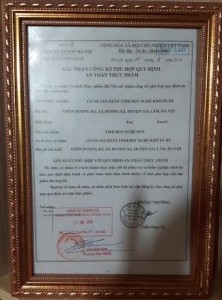The authors concluded that LSADI-S is actually proficient at this retrospective opinion into the reaching a first weight reduction and you will weight restoration
Cottam et al (2020) noted that the SADS procedure has been suggested to be an effective bariatric procedure that offers excellent WL and by lengthening the common channel the potential to reduce micro-nutrient deficiencies. From , a total of 120 patients were enrolled at 6 sites across the U.S. and underwent the SADS procedure; WL, co-morbidities, QOL, and AEs were followed post-procedure for 12 months. At 1, 6, and 12 months, 98.3 %, 85.5 %, and 77.1 % of the patients were available for assessment, respectively. 8 ± 5.8 versus 29.8 ± 4.4, p < 0.001 respectively); 65 patients had T2DM at baseline; however, 11 patients were lost to follow-up. Of the available data (54 patients), 96.3 % of the patients had a resolution of T2DM by 12 months with a mean A1C reduction from 7.8 ± 1.6 to 5.3 ± 0.7. Furthermore, there were reductions in hyperlipidemia, sleep apnea, and hypertension at 12 months. Patient GERD satisfaction and QOL (SF-36) scores were significantly higher at 12 months post-procedure (p < 0.001 in all cases) while 12-month protein levels remained at normal values. There were abnormalities of parathyroid hormone (PTH) and vitamin D at 1 year with all other nutritional markers being not significantly different at 1 year from baseline. There were 10, III-b or greater complications according to the Clavien-Dindo scoring system during the study period, not all of which were related to the surgery. The authors concluded that SADS was a highly effective WL procedure with significant co-morbidity reduction at 1 year. At 1 year, complications and vitamin and mineral deficits appeared to be consistent with other mal-absorption operations. The authors concluded that long-term follow-up is needed, especially around complications and vitamin deficiencies.
At the one year, patients presented somewhat reduced Bmi when comparing to standard (46
Surve ainsi que al (2020a) indexed that enough time-name negative effects of number 1 unmarried-anastomosis duodeno-ileal sidestep which have arm gastrectomy (SADI-S) never have started advertised throughout the literature. In a retrospective studies, these experts checked-out the fresh new much time-term consequences immediately following first laparoscopic SADI-S (LSADI-S). Study away from 750 clients just who underwent good pri from the 3 surgeons was reviewed. The fresh mean ages and you can pre-medical body mass index (BMI) were 49.step 3 ± 13.1 many years and 50 ± twelve.6 kilogram/m2, respectively. Follow-upwards was on 109 customers (61 %) at the five years as well as on 87 customers (53 %) at the 6 years; 6 patients didn’t have any realize-upwards. The average operative some time and amount of stand (LOS) were 67.six ± twenty-seven.4 minutes and step one.5 ± .8 days, correspondingly. The fresh intra-surgical, short-identity, and you can enough time-identity complication prices was in fact 0 %, eight.8 %, 11.eight %, respectively . The fresh 31-day emergency room (ER) visit, re-entry, and you can re also-process cost was basically 0.cuatro %, 1.step one %, and you can step 1.step one %, correspondingly. As a whole, there were 15 (2 %) levels IIIb enough time-identity complications novel in order to LSADI-Splete remission from diabetes mellitus (T2DM) was observed in 77 % of one’s diabetic population. In the 5 and six many years, brand new suggest improvement in Body mass index are 17.5 ± six.nine and 17.six ± 6.4 kg/m2, respectively. The brand new death price are 0.5 %. Additionally, this type of boffins stated that even if such results displayed appropriate nutritional problem, inquiries nonetheless are still by the retrospective character of your analysis. They stated that after that a lot of time-name lead degree which have top pursue-up cost are needed to confirm this new enough time-label nutritional results of LSADI-S.
The article authors reported that that it study’s main downside is actually brand new pursue-up commission. The fresh enough time-name go after-right up rate is 61 % within 5 years, and you may 53 % within six many years. Because there are zero enough time-identity consequences post in the books, and the middle-term analysis have been restricted, such scientists noticed it is essential to declaration the brand new enough time-title outcomes despite whatever they perform imagine a small diligent follow-upwards. But not, there were enough patients earlier in the day 5 years, therefore the probability of the extra weight loss research switching perform become minimal towards the purchase of significantly more customers. Here also had been enough diligent age you to definitely one prominent long-title side effects should have come seen. At exactly the same time, because this try the fresh new authors’ overall expertise in this technique, it provided the learning contour. New side-effect rates provides fallen as these investigators are extremely way more competent within this process. This information was not and should not be the finally word for the SADI-S. There are many different products unresolved. Instance, what is the optimal SG dimensions and you will what’s the optimal CCL to possess Body mass index otherwise co-existing standards. Issue was not responded through this post, and additionally they are entitled to to be. In addition, what is the optimal period of an average station to prevent diarrhoea blog post-surgically, and what amount of blog post-medical posts to have diarrhea is acceptable; these types of researchers simply do not see. Hence, further a lot of time-name studies are needed to prove the safety and you will effectiveness of this process.








